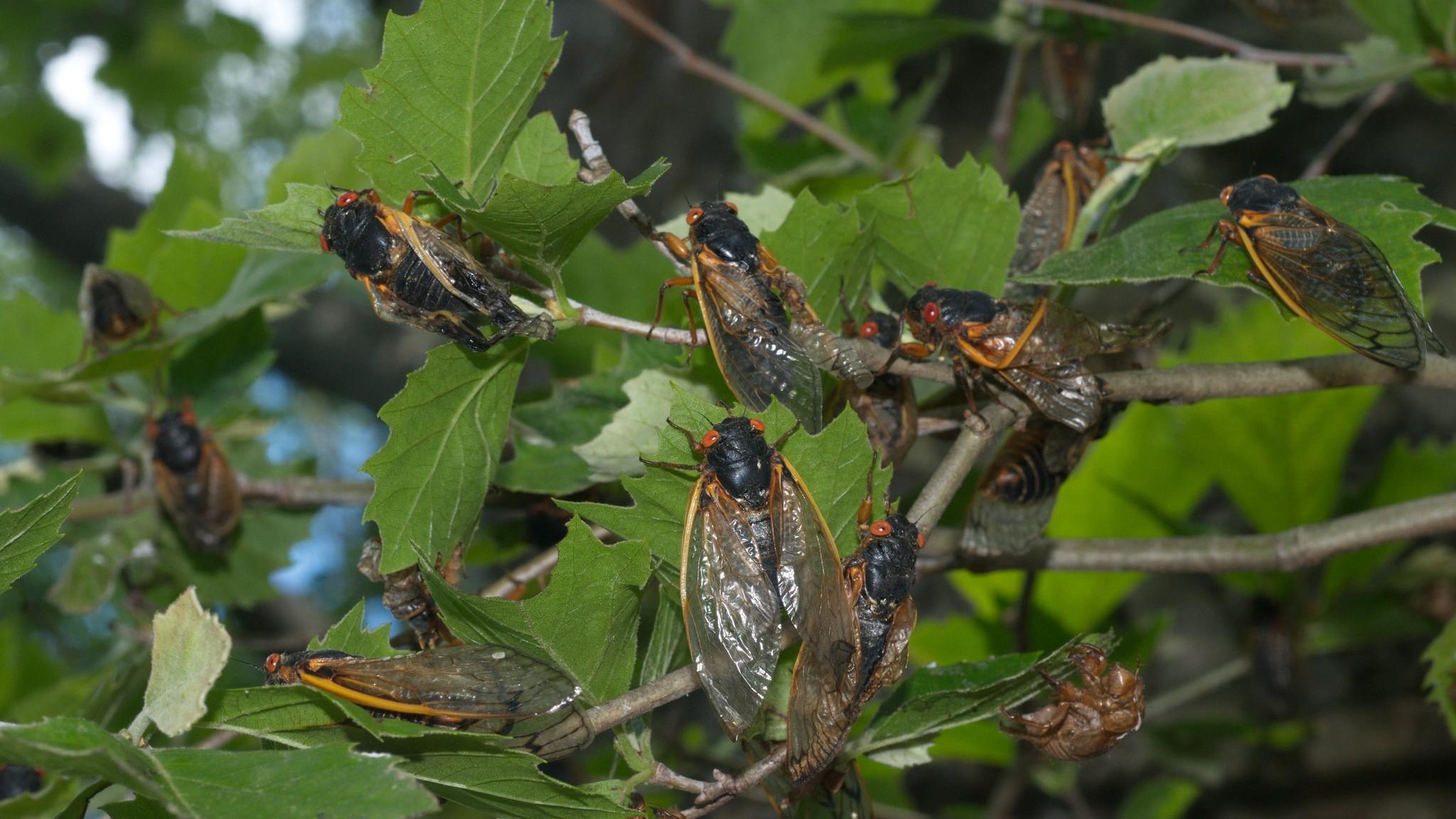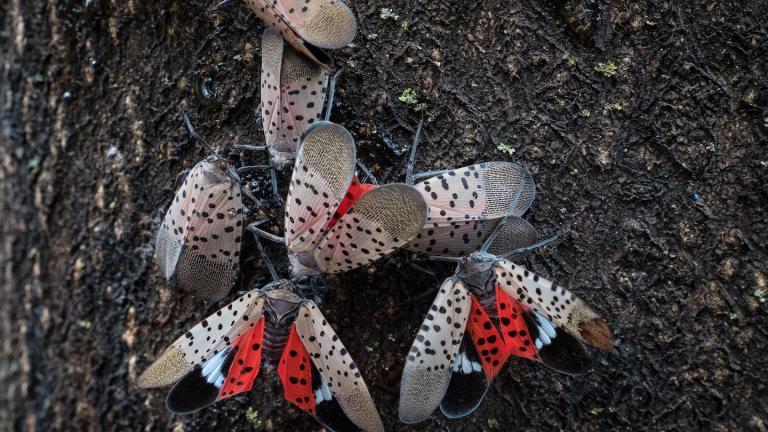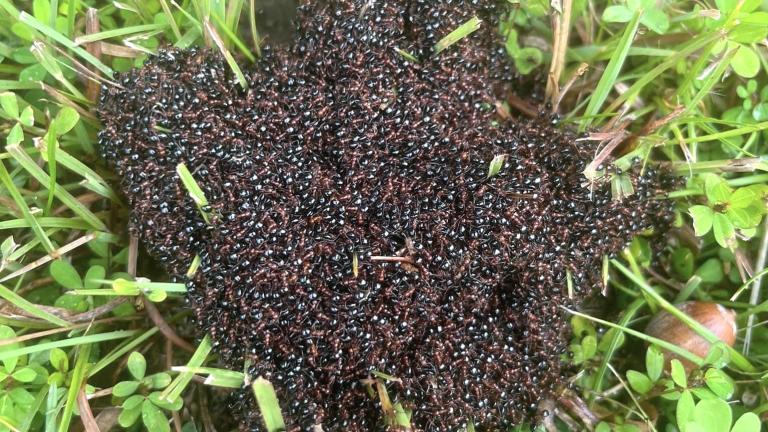 Hordes of female periodical cicadas will be laying their eggs in small tree branches. (Armed Forces Pest Management Board / Flickr Creative Commons)
Hordes of female periodical cicadas will be laying their eggs in small tree branches. (Armed Forces Pest Management Board / Flickr Creative Commons)
This spring’s historic emergence of two periodical cicada broods in Illinois is going to deliver plenty of unusual sounds and sights, and we’re not just talking about the millions of insects springing forth from the ground.
Folks might also notice trees swathed in what might best be described as tulle “head scarves,” a defensive tactic some gardeners and landscapers are likely to deploy to protect young and tender stems from cicadas’ potentially damaging reproductive rituals.
After spending 13 or 17 years underground, once cicadas tunnel their way topside, they are laser-focused on finding a mate and getting down to the business of procreating. Hordes of females will then be looking for places to lay their fertilized eggs — as many as 600 per female — and that incubator will be a tree.
“They’re going to hit everything that’s woody,” said John Cooley, assistant professor in residence at the University of Connecticut, where he oversees the Periodical Cicada Project.
Females have what’s called an ovipositor — a specialized tube-like organ that deposits eggs — and they use it to make 1/4-inch to 1/2-inch slits into tree stems for the eggs.
“It’s like taking a razor blade and cutting into a branch,” said Stephanie Adams, tree pathologist and plant health care leader at Morton Arboretum.
The large branches of mature trees won’t be affected, because the ovipositor can’t slice through thick bark. But young trees and branches of 2 inches or less (think pencil-sized) will be prime targets.
Maples; fruit trees including apple, plum, cherry, etc.; and even baby oaks will be vulnerable, Adams said.
Female cicadas create slashes in small branches to lay their eggs. This can cause stems to die at the tips (called “flagging”). In mature, healthy trees, the damage is mostly cosmetic, but in young trees it can cause serious harm. (Credits, clockwise from top left: John Ghent, USDA Forest Service, Bugwood.org; Robert L. Anderson, USDA Forest Service, Bugwood.org; John Ghent, USDA Forest Service, Bugwood.org; Jim Occi, BugPics, Bugwood.org)
Anyone who lives in the path of an emergence should hold off on planting a new tree this spring, Adams and Cooley said.
Trees already undergo transplant shock when adjusting to a new home, and adding cicada damage on top of that, with the tree struggling to seal its wounds, could be more stresses than a sapling can survive.
Affected branches are likely to die off at the tip, and either break off or remain attached but turn brown, a symptom called “flagging.” This isn’t deadly to a mature tree, but it does look unsightly, Adams conceded, though she added it’s not recommended to cut off the branches just to keep up appearances.
Young or less vigorous trees might have a harder time coping with a massive volume of wounds. For peace of mind, people worried about their tree’s health or the cosmetics of their landscape could put a net over the tree, she said.
Morton Arboretum will be covering some of its trees for both of those reasons, Adams said. There are some areas of the grounds that are more aesthetically driven than others, and staff wants to preserve the appeal, she explained. In other instances, the netting will be used to protect the arboretum’s rare and endangered specimens.
The best time to cover trees will be once the emergence has begun, roughly expected to occur in mid-May in the Chicago area. But “if you want tulle, buy it now,” Adams said, as it is likely to be in short supply once the cicadas appear.
The entire emergence is expected to last approximately six weeks, at which point the netting can be removed.
Try to appreciate the insects while they’re here, Cooley said.
“These are a natural part of the forest. They’ve evolved with our trees,” he said, and vice versa. “These are a completely harmless natural part of the ecosystem. They’re just out to do their thing.”
Contact Patty Wetli: @pattywetli | (773) 509-5623 | [email protected]








